Quail can go from hatch to butcher weight in 6 weeks. During that time, they eat much less than the average meat chicken.
Backyard quail also begin laying eggs at 6 weeks of age, average versus the average hen being 18-22 weeks of age. Some homesteaders are even able to sell their quail eggs, and quail egg prices can bring $3-$10 per dozen.
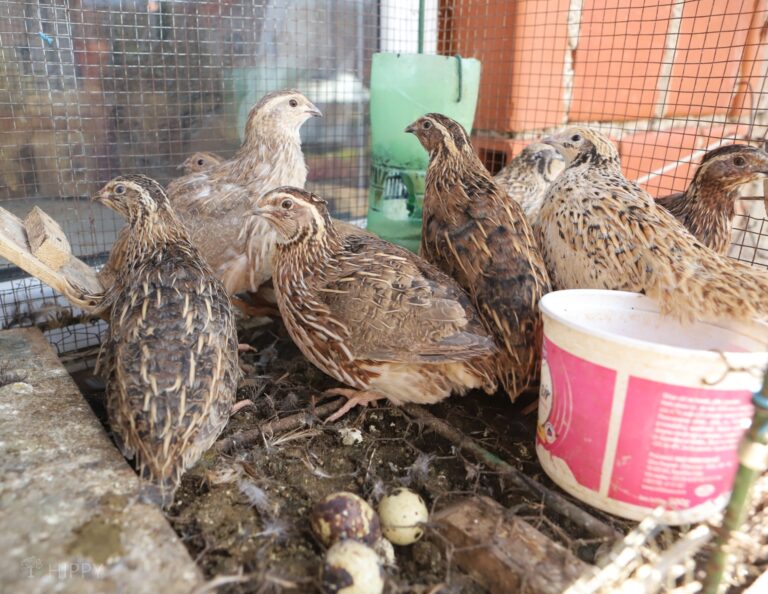
Backyard quail do have a lot of drawbacks. For some, raising quail is just not worth the benefits.
A small fortune can be spent on backyard quail cages, special waterers, hatching equipment, and so on. Is the return on investment really worth the trouble of raising quail?
Table of Contents
High Demand For Quail Eggs and Meat
There is high demand for both quail meat and eggs.
Their incubation period is very short – around 18 days and since they grow fast quail can be ready for slaughter within six weeks of their birth. This allows for consistent meat production when you’ve got a large flock.
The eggs of quail have high quantities of protein, phosphorus, vitamins (i.e. A, B1, and B2), and iron. The meat is tasty and packed with protein, vitamins, minerals, and amino acids (fatty acids).
One thing to note is that quail eggs are tiny. The egg weights are typically between 7 and 15 grams; this means that to get the same amount of nutrition as a chicken egg, you’d have to eat five quail eggs.
That high level of nutrition makes them great for human health and has made quail eggs and meat popular with high-end restaurants.
With that in mind, quail farmers have a vital role to play in supplying meat and eggs to meet the demand of food…
Thankfully quail hens start laying eggs pretty early on in life and in their first year of life, quail hens will lay around 300 eggs. This makes commercial quail farming one of the more popular farming ventures.
Different Quail Breeds
There are a few different quail breeds out there, these include:
Common Quail (Coturnix Coturnix)
The common quail can reach heights of between 16 to 18 centimeters. It can weigh between 70 and 135 grams. It’s an easy bird to raise for meat and eggs. They’re much quieter than chickens which makes them friendlier for neighborhood living.
Japanese Quail (Coturnix Japonica)
Found throughout East Asia, the Japanese quail is a popular option for quail farming. It’s the most farmed species for its meat and eggs.
They have a greyish/brown plumage with brown or black speckles. They prefer to be in open environments with access to a water source.
Fun fact: they have 28 different calls for different situations – talk about a vocabulary!
California Quail (Callipepla Californica)
The state bird of California since 1932, the California quail is also called the Valley quail. These birds have a very distinctive, droopy crest that’s either brown (females) or black (males).
Their sides are brown with white stripes and they typically take to bushy areas for breeding.
They are found throughout North America and have been introduced to other countries including Argentina and South Africa.
King Quail (Synoicus Chinensis)
Also called the blue-breasted quail or the Asian blue quail, these little guys are typically found throughout Southern Asia.
They only live around two years in the wild but they can live up to 13 years in captivity (although they typically only live for around six years on average).
Telling Males and Females Apart
Telling male and female quails apart can be tricky. One way to do it is to look at the coloring on the plumage. Sometimes the males may have brighter colored feathers than the females.
Size is also a way to do it. One is usually bigger than the other. The Japanese quail is a good example, the females are typically bigger than the males.
Feeding Quails
Quail pellets can be purchased at most ranch stores. If they don’t have them, the store could probably order them for you. Otherwise, vegetable trimmings, as well as certain kitchen scraps are also good for your birds.
Pros and Cons
As with all birds, there are good things and bad things that go with raising them. Here’s a quick table with the most important ones, and after that we’ll talk in-depth…
| Pros | Cons |
|---|---|
| ✅ quiet birds | ❌ they poop a lot |
| ✅ easy to care for | ❌ they could be illegal to raise where you live |
| ✅ eggs are expensive to sell | ❌ can be aggressive to one another (particularly the males) |
| ✅ start laying at 6 weeks | ❌ cannibalistic tendencies |
| ✅ low-maintenance | ❌ cannot be free-ranged |
| ✅ they don’t need a lot of space | ❌ quail’s diet is somewhat restrictive |
| ✅ easy to butcher | ❌ can fly high and far |
| ✅ temperature-hardy | ❌ not rain hardy |
| ✅ their poop makes good fertilizer | ❌ not very smart compared to chickens |
| ✅ they lay their eggs in random places | ❌ short lifespan |
| ✅ they don’t need that much feed | ❌ cage needs daily cleaning |
| ✅ butchering is easy |
10 Good Reasons to Raise Quail
- Quail are tiny little birds that produce tiny little eggs.
- They are useful for meat AND eggs
- You can keep an entire flock in a garage or outdoor shed, or laundry room
- Quail are fairly easy to hatch for yourself
- they are small enough that you can fit 4-5 birds in a rabbit hutch and they will have enough room to move and be happy.
- Quail are not noisy birds, so no one will know you have them, unless YOU tell them
- Quail are easy to care for, requiring only a few minutes a day to feed, water, and change bedding, or dump litter trays.
- Quail eat very little, but are large enough at butchering time that one o two birds can feed an adult
- Quail reach full maturity and being laying eggs at only 6 weeks of age, making the turnaround time on them quick
- If you want to sell eggs, quail eggs go for a premium, and in my area that is around $8 per dozen.
Cons of Raising Quail
Here are some issues to consider when thinking of raising a backyard quail flock…
Problem #1: They Poop a Lot
When raising quail, it is shocking just how much poop even a small flock of backyard quail can produce.
Like chicken manure, you cannot put it straight in the garden. It has to be composted for several weeks to several months, depending on your weather conditions. Be sure you know where it will go.
There will be bedding such as pine shavings, corn cob husks, or sawdust mixed in with the feces. Truly, there is no easy way to separate that out, either.
My small flock of 34 backyard quail birds filled 2-50# feed sacks with manure and bedding in ONE WEEK – every week! Be sure to have a plan for all that waste.
Check to make sure the bedding you are using doesn’t create soil issues in your garden as pine shavings, sawdust, and wood ash can be acidic and crushed corn cob takes years to decompose. Conduct soil tests before adding it to your garden.
If you don’t have a suitable place to dispose of it, start a compost heap (in advance) outdoors and away from your house, garage, or other dwellings.
If you are in the burbs and have limited space, line up a farmer/homesteader friend who has plenty of space and arrange to bring it to them at least twice a month.
With feed waste mixed in, if you leave it sitting around your property for too long, the smell will become overwhelming. The other problem is you will draw mice, rats, possums, raccoons, and other vermin.
Once they discover the flock, the vermin may even attempt to gain access to the backyard quail themselves. If successful, they will destroy an entire flock of backyard quail.
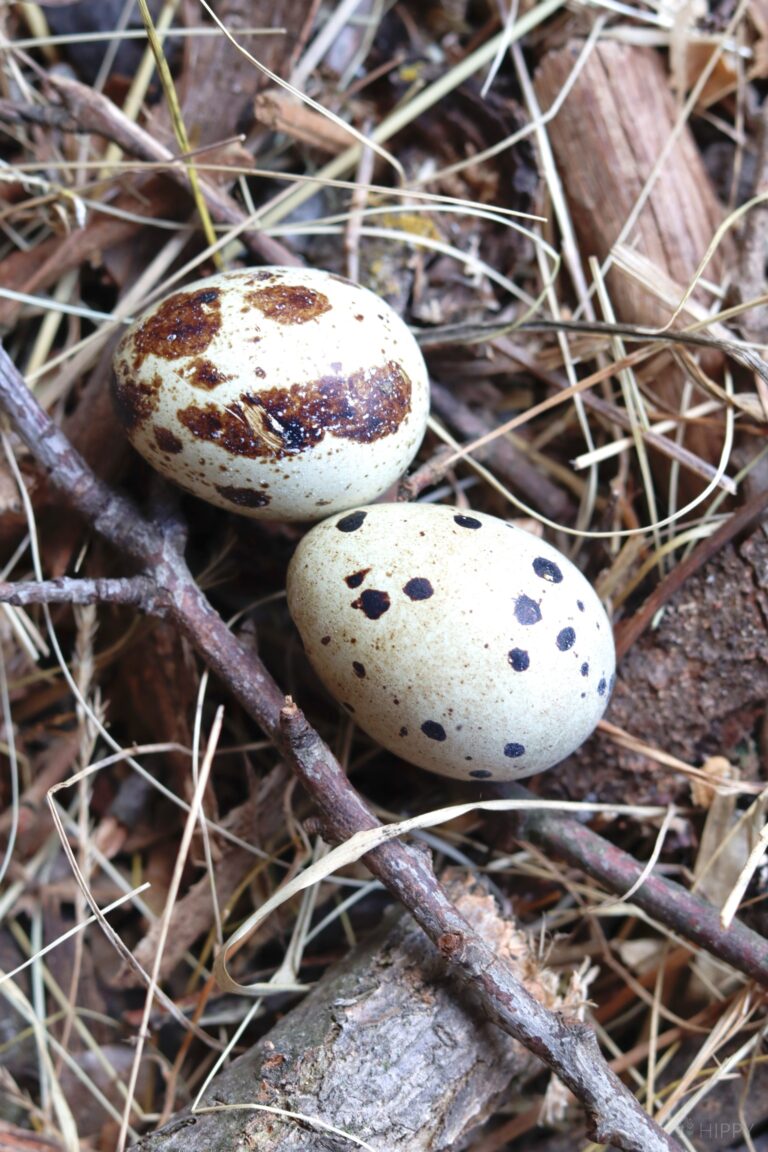
Problem #2: The Health Department
If word or odors get out, or vermin get in, neighbors may complain to your local authorities.
Check your local laws regarding gamebirds (some localities classify quail differently than chickens), backyard poultry, and other small livestock. Raising quail can be under different laws than raising chickens.
Find out what permits, inspections, etc you are legally obligated to comply with. This may include required inspections from any of several local or state authorities, most likely the health department.
Failure to comply with their rules, permit inspections, or correct any infractions can mean fines, confiscation of your flock and even have charges filed against you. Understand the law in your area!
In many areas, it is ILLEGAL to sell your backyard quail eggs and/or meat without inspections, permits/licenses, and compliance with local health regulations.
Your quail eggs and quail meat must be properly handled, cleaned, packaged, labeled, and refrigerated/frozen according to local laws.
Stores and restaurants will ask see evidence of your compliance or they will refuse your products. They too must follow the law and purchase ONLY from licensed vendors. Otherwise, they cannot legally resell it.
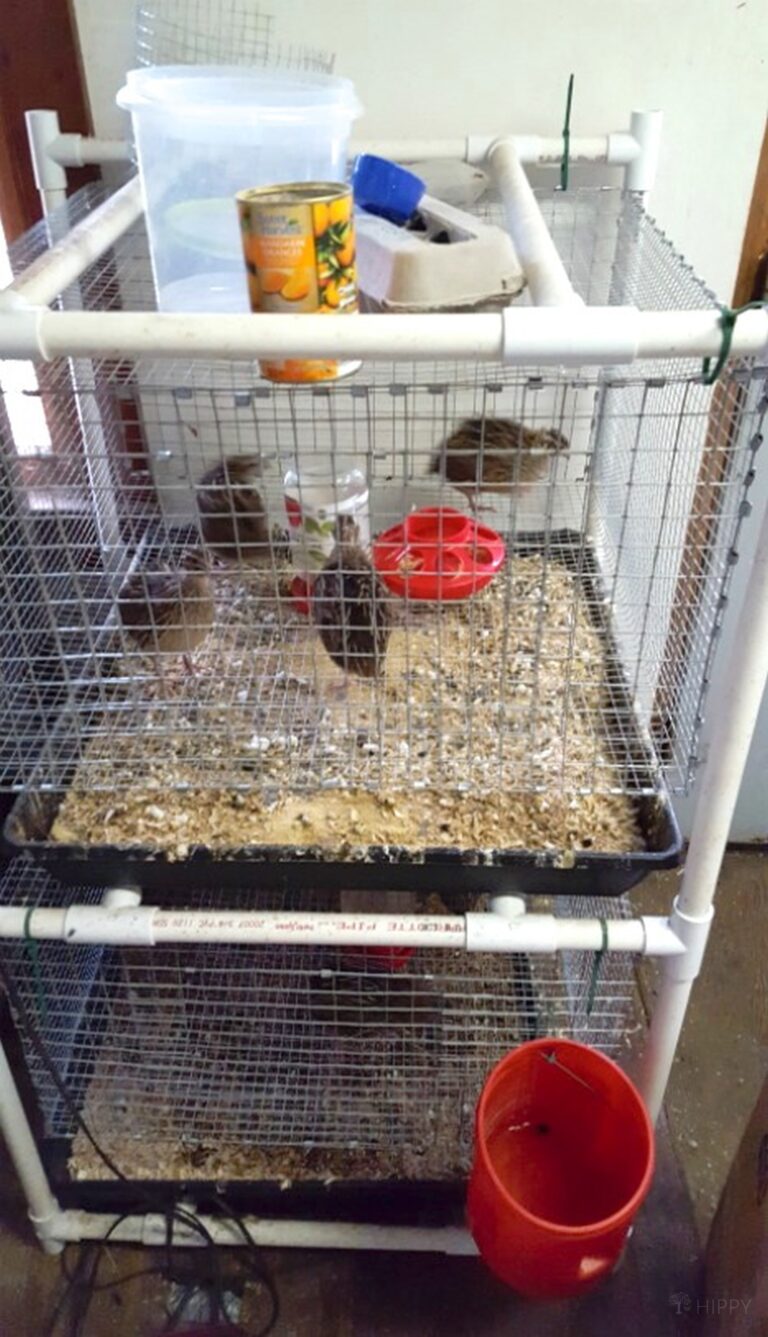
Problem #3: Cage Cleaning
The microscopic particles of fecal matter mixed with urine, ash or sawdust (from their baths), and feed from your backyard quail flock creates dust that can send those with respiratory issues into sneezing fits or asthma attacks.
Problem #4: Feed Waste
When raising quail, there is a feed involved. Quail (like any poultry) like to play with their food and as much feed is kicked out of the feeder onto the floor as goes into their bellies. Half of the feed can easily be wasted, regardless of what feeder you use.
It can’t be fed back to them if it is mixed with feces, but at least the powder that is left behind in their feeder or the bottom of the still clean feed bag can be run through a large metal sieve, and turned into mash.
To your backyard quail flock, it is a special treat. To you, it is feed cost savings. Don’t waste it.
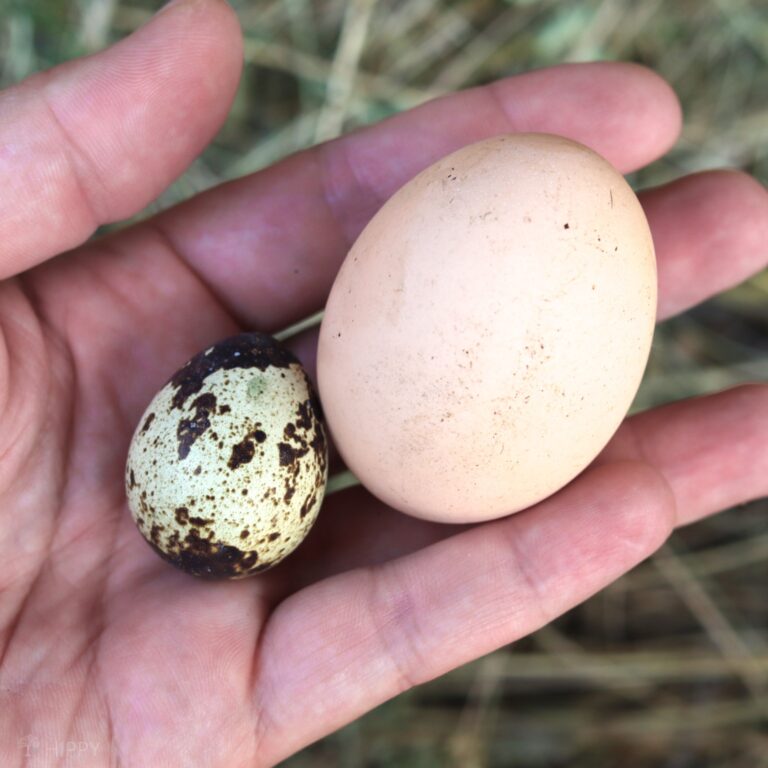
Problem #5: They Can Be Vicious With Each-other
Some quail can be vicious cannibals. Once one draws blood on another and the whole flock smells blood, bad things can happen FAST. They will ALL gang up on the weak one giving you an entire flock of bullies.
Have a couple pet carriers or other alternative housing available so that you can separate out the injured from the bullies and nurse them back to health.
Sadly though, in my experience, when you get them patched up and reintroduce them to the flock, it is just a matter of time until it happens again. They remember.
Problem #6 with backyard quail-they can fly.
Unlike chickens, quail are pretty good flyers and can go quite high, far, and fast. Either clip their wings or always have a secondary means to block exits when handling them.
Quail cages should be built to be no no taller than 18 inches as well, because they can attempt to fly and get hurt on the top of the cage.
Problem #7: The Constant Maintenance
Quail can never run out of clean, water, ideally it should be fresh water. Like with any livestock, you will need a means by which to keep it from freezing in winter.
If you cannot do that, then you will need to thaw and refresh their water at least 3-4 times a day.
Also note, they poop in their water so a nippled system is best. They will poop in their food as well, so you will need to monitor that closely to keep it clean.
Raising Quail: How’s it Done?
Quail are very shy birds who don’t want a whole lot from you. Raising them, however, does require some planning.
Think about where you’re going to put them and what you’re raising them for – they need around 14 hours of sunlight if you’re breeding them for eggs.
If you want to increase egg production, you can hang lights around the cage, just don’t let them go for longer than fourteen or, at most, fifteen hours. The lack of sleep will cause severe stress on your birds.
As far as space goes, they don’t need much. A small cage, an old rabbit hutch, or an old shed will work just fine.
Clear some space for a small cage, quail house, or rabbit hutch and set it up where you want it or convert an unused shed (if you have one) into a quail enclosure. Make sure your quails can’t escape and are safe from predators.
You’ll also want to ensure that the enclosure is well-ventilated and that your birds can get plenty of fresh air.
Set up your water troughs in the back of the cage and the food troughs in the front. Make sure your young birds can drink without falling into the water and drowning.
Once you’ve got a cage/shelter set up, and you’ve figured out how many birds you need, it’s time to start looking at breeds.
Contact the local urban homesteaders and quail farmers to get birds that are acclimated to your area’s climate. Make sure you get two female quails for every male quail you have and keep the males and females separated.
One thing about buying your birds to keep in mind, they MUST come from reputable and/or reliable breeders. If those breeders are local that’s a bonus.
You will also need an incubator to keep the chicks warm. Quail chicks are often expensive, and since quails aren’t very good at caring for their own young, you’ll have to do it yourself.
Once the birds are hatched and managing on their own, you just have to take very good care of them.
Keeping an Eye Out for Disease(s)
When it comes to the quail farming business, one thing you have to be on a constant lookout for is disease. You don’t want a bird getting sick and spreading the disease to the rest of your flock.
Diseases tend to spread rapidly so you have to be quick to separate the sick birds from the healthy ones.
It’s important that, if you have an outbreak, you don’t allow other birds or unknown persons access to the sick/dead bird. You really don’t want anything to spread.
There are several diseases that you should look for, two big ones are:
Coccidiosis
Coccidiosis is a disease commonly found in poultry birds (quail are one of the smallest species of poultry birds). It typically affects the younger birds more and, left untreated, it can be fatal.
Signs and Symptoms
Symptoms of coccidiosis include:
- Weight loss
- Loss of appetite
- Droopiness
- Diarrhea
- Ruffled feathers
- Death
Treatment
Treatment of coccidiosis involves the administration of medications. Treatment should start with a consultation of your local veterinarian. They will be able to prescribe the right meds and the dose of those meds to get your feathered friend as right as rain.
Ulcerated Enteritis
Also called quail disease, ulcerated enteritis is caused by Clostridium colinum bacteria. It’s most commonly found in domestic/captive quail but can occur in other birds.
The disease is contracted/spread through the consumption of contaminated food and drinking water. Left untreated, this illness can be fatal – especially in younger quails.
Signs and Symptoms
Some of the signs that you may have an outbreak of ulcerated enteritis on your hands include:
- Sudden death
- Emaciation
- Diarrhea
Treatment
Like with coccidiosis, when it comes to treating ulcerated enteritis, your local veterinarian should be consulted. They will be able to give you a proper diagnosis and provide you with a treatment and vaccination plan.
How To Clean Your Quails’ Cage
To help prevent issues, you can try these ideas:
- Work in an open, well ventilated area. If your cage is indoors, set up a box fan (with a furnace filter taped to the back) and point it so it pushes the dust OUT the door.
- Wear a high quality, air filter mask OR at the very least, wrap a bandana around you nose & mouth and keep your mouth closed. Quail can sling poop for several feet. Given the right aim for them and wrong place/wrong time for you, they can get you right in the face. I have had it happen. Keep your mouth closed/covered and be ready to DUCK!
- When finished, remove all your clothing, put it straight in washer, and shower including a shampoo. Why? I failed to do that several times and later that day, I could smell and urine in my hair for hours. Maybe you aren’t as sensitive, but it did cause an asthma attack for me, too.
Once a month (two months TOPS), you will likely want to power wash the quail cage to remove the caked on, dried feces that has built up on the frame & hardware cloth.
- Place the quail in a temporary holding pen or cage, give them food and water.
- Take the cage outdoors away from cars & buildings to power wash it. The flow on a standard garden hose won’t cut it, you will need a power washer.
- After initial rinse, use a pressure sprayer with a hot water and bleach solution to spray it down, let sit for a few minutes.
- Rinse and repeat until clean. If you use a scrub brush, make sure it has a long handle because a brush makes the feces fly right back in your face.
- Allow to dry in the sun for several hours before returning the birds to their habitat. A fan can speed up the drying process, too.
Is Raising Quail for You?
In short, many feel that backyard quail really are NOT a good choice for inexperienced city folks. The return from the amount of time spent just isn’t worth it. When raising quail for profit, many are left in debt rather than profitable.
How do you feel about backyard quail? Are you going to try raising quail on your homestead?
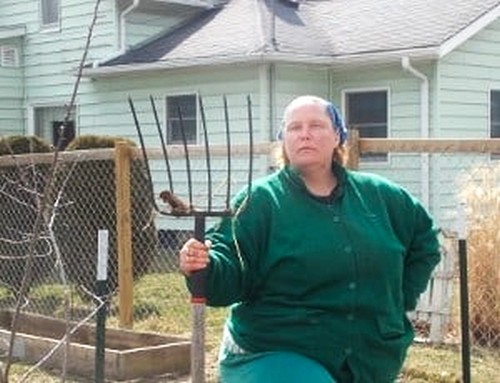
Heather’s homesteading journey started in 2006, with baby steps: first, she got a few raised beds, some chickens, and rabbits. Over the years, she amassed a wealth of homesteading knowledge, knowledge that you can find in the articles of this blog.
Learn more about Heather and the rest of the writers on this page.

All good to know! Thanks, Heather!
thank YOU, JO 😉
We bought 9 quail 3 weeks ago and have experienced most of what you posted here. Im actually not quite sure about about our township laws but i think as long as the neighbours dont mind, we shojld be in the clear. Yeah we call them our piggies because theyre so smelly and make such a mess with their food. The reason for us getting them is because we have a small yard so we dont want a dog but feel like the kids need something. So the eggs will be a bonus, we really just wanted them for pets. Thanks for all your info.
The compost pile is a good idea, i would want to ruin my garden with it.
I have raised “balcony” quail on the 4th floor of my city apartment. Yes they are messy and can be mean to each other BUT, the benefits definitely outweigh the negatives. They are sweet “pets” have personalities, greet you with daily fresh eggs, provide endless conversation starters. Incubating your own eggs is so much fun. Who doesn’t enjoy holding a fluffy walnut sized chick or receiving the gift of a carton of mini eggs? It is a fabulous urban farming mini project, perfect for a family with children. And the eggs are super nutritious.
I agree! I’m in California and raise them in my sunroom…. I took the two sweetest quail, and their eggs hatched giving me some of the cutest chicks with the same disposition. Otherwise the eggs are simply delicious! It’s worth all the cleaning – 😉
Thank you so much for the detailed info on care and upkeep. I was considering quail over chicken since they are smaller, but the points you mentioned were things I would never have known. Thank you very much!
I supposebly have a pair of quails and they are probably 4 months old and they havent started laying. What could be some reasons for this?
It’s been a few months since your comment – I hope they’ve started laying 😉 – for those with the same issue , it could be stress, lack of proper lighting, turkey feed no less than 28% protein? Hope this helps 😉
Possibly both are male?
if both were male living together they would be fighting.
What a good Read Iam a Inland South Fl Rancher I love living in the cypress raising home grown beef,poultry and wild game when in season. Iam new to having quail and they are the funniest little birds…hoping some of the females get broodie and hatch out some bitties. Intentions were to raise them for meat…well that dog flew the coop I cannot kill them there to cute!
I got 5chicks that are now 7wks(3hen/2roo). Just got the first egg today! I have them in a 5×3 sparrow cage. Put down a double layer of newspaper, then timothy hay all over. Put some branches, sand box and a small hiding box for them. The food goes in an unused guinea pig litter box. Keeps the mess down.
Hello,
Thank you for the informative article. I’m a fairly new suburban chicken farmer, and had an epiphany….. Why not quail?
I haven’t decided 100 % yet, but I think I might give it a go.
Curt
Quail are great pets! If you’re looking for an ROI than they may not be for you. But if you are looking for a couple of small pet birds that are much quieter and nicer than parakeets then I’d recommend quail.
quail are not pets and are far from domesticated enough to competently raise other than in cages where even there, they end up regularly dead over fighting, crowding, or just jumping into the ceiling or walls because of seeing their own shadow.
After many years with a farm and 30-40 laying hens … all working the farm’s compost heap and laying a gazillion eggs for sale … living in a big walk in hen house with a deep litter floor … now I’m in suburbia with a code prohibition against chickens. I miss my girls so much! Now I’m thinking quail, so petite and quiet, might slip beneath the code enforcement radar and provide me with the garden animals that I crave.
Bro, imagine keeping your quail in a super tiny cage like that. Like seriously. If you don’t have the room to keep an animal humanely then how about not getting any. If you cannot afford to own quail and give them a happy life, then how about not getting any quail? Why would you do that? How horrible. That’s a living animal, it thinks, keeping something like that in a small cage is wrong. Buy land and build a reasonably-sized quail house or don’t get quail man. You didn’t think about the quail when you bought them.
Your guide is not good either. All you talked about was that quail poop. You give poor guidance.
H
If you know about quail they are cage birds who like living in a small space. Food, water, and a clean cage is all they need. They are vulnerable if in a large space.
I’ve been raising quail for a little over a year now. Yes they are messy, but for the meat and eggs production in such a short period of time I’m convinced they are worth the work. Did I mention they are messy! You just have to stay on top of it every day or you’ll have a bigger mess. For me it is worth worth it. I eat quail eggs for breakfast almost every day and I substitute quail eggs for chicken eggs in recipes.
Were about in ca. I am in santa clara county.
hmm, kind of sounds like chickens, on a smaller scale of course. As far as the mess. I would only keep prob 5-6 quail, for the eggs, I am the egg eater, my husband doesn’t eat eggs, so that would be enough for myself. Mostly just want a way to supply some protein with the way things are going these days. And quail from what I read produce quickly, and you can hatch out a few eggs to keep up your flock, as the lifespan is pretty short. I cannot fathom using for meat, and would only do so if in dire need to. I also would prefer they be in an aviary setting, so they can be outside, not inside my house. Probably make a concrete base, scatter some soil, sand mix and just sweep it out, or rake, depending on the need. Living in a small cage bothers me, I know they like confined areas, but I have seen aviary videos where they seem to love having the space to hop around in, likely help avoid the attacks on each other as well for lack of spacing. Still looking up information about it all, before deciding.
I am thinking along the very same lines! Let me know if you have success figuring it all out. Most vids are in cages. I’m looking for a small aviary design I can plop in the middle of my garden perhaps…and then rake it out into a pile until it’s ready to add to the garden? I heard it’s ok for garden after 3 months?
Based on your cage set up I am unsurprised you have encountered such issues with quail. Is that the only housing they have? I imagine they are quite problematic without an outdoor aviary, or at least without a larger cage! Altercations between birds is to be expected in such conditions, not to mention handling all that waste.
I have had 4 quail–one male and three hens for over a month. They were almost grown when I got them. I have only had two eggs from different hens in the last two weeks. Am I missing something?